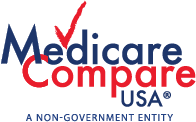Medicare Part A
Hospital Stays/Inpatient Care
Medicare Part A helps to pay for hospital, skilled nursing facilities, home health, and hospice care. In most cases, if you had a Medicare deduction from your paycheck while you were working, you may have a premium-free Part A. Medicare Part A coverage begins automatically when you become eligible for Medicare at age 65 or if you have been drawing Social Security for 24 months because of a disability. The Hospitalization Insurance trust fund is mainly funded by a dedicated payroll tax of 2.9% of earnings, shared equally between employers and workers (source). Since 2013, workers with income of more than $200,000 per year for single tax filers (or more than $250,000 for joint tax filers) pay an additional 0.9% on income over those amounts.
What Part A Helps Cover:
- Inpatient care in hospitals
- Skilled nursing facility care
- Hospice care
- Home health care
What Part A Does Not Cover:
Medicare Part A hospital insurance does not cover the costs for:
- A private room (unless medically necessary)
- Private-duty nursing
- Personal care items (toiletries)
- Long-term care
- Extraneous charges (telephone and television)
- The cost of blood. If the hospital gets it from a blood bank at no charge, you are covered. If the hospital does purchase blood for you, you only pay for the first three units you receive each calendar year, unless you or someone else donated blood.
- 24-hour home care, meals, or homemaker services (unless related to your treatment)
- Personal care services (e.g., help with bathing, cooking, and dressing), if this is the only care you require
Part A Pricing
How much does Part A coverage cost?
You usually don’t pay a monthly premium for Part A coverage if you or your spouse paid Medicare taxes while working for a certain amount of time. This is sometimes called premium-free Part A. If you aren’t eligible for premium-free Part A, you may be able to buy Part A. In most cases, if you choose to buy Part A, you must also have Part B and pay monthly premiums for both. If you choose NOT to buy Part A, you can still buy Part B. People who must buy Part A will pay either $278 or $506 each month in 2024.
How much does Part A Pay?
Hospitalization: Semi-private room and board, general nursing and miscellaneous services and supplies
- First 60 Days 100% covered after $1,632 Deductible
- 61st – 90th Day $408 per day
- Days 91 and beyond: $816 coinsurance per each “lifetime reserve day” after day 90 for each benefit period (up to 60 days over your lifetime)
- Beyond lifetime reserve days: all costs
Skilled Nursing Facility Care: Requires 3-day Hospital Stay
- First 20 Days 100% Covered
- 21st – 100th Day $204 per day
- 101st Day and Above Not Covered
Home Health Care
- Medicare Approved Services 100% Covered
- Only for Medically necessary skilled care services and medical supplies (not Long-Term Care needs).
For more information, go to this webpage: www.medicare.gov/your-medicare-costs/medicare-costs-at-a-glance.
What’s the Part A late enrollment penalty?
If you aren’t eligible for premium-free Part A, and you don’t buy it when you’re first eligible, your monthly premium may go up 10%. You’ll have to pay the higher premium for twice the number of years you could’ve had Part A but didn’t sign up. So, for example, if you were eligible for Part A for 2 years but didn’t sign up, you’ll have to pay a 10% higher premium for 4 years.
